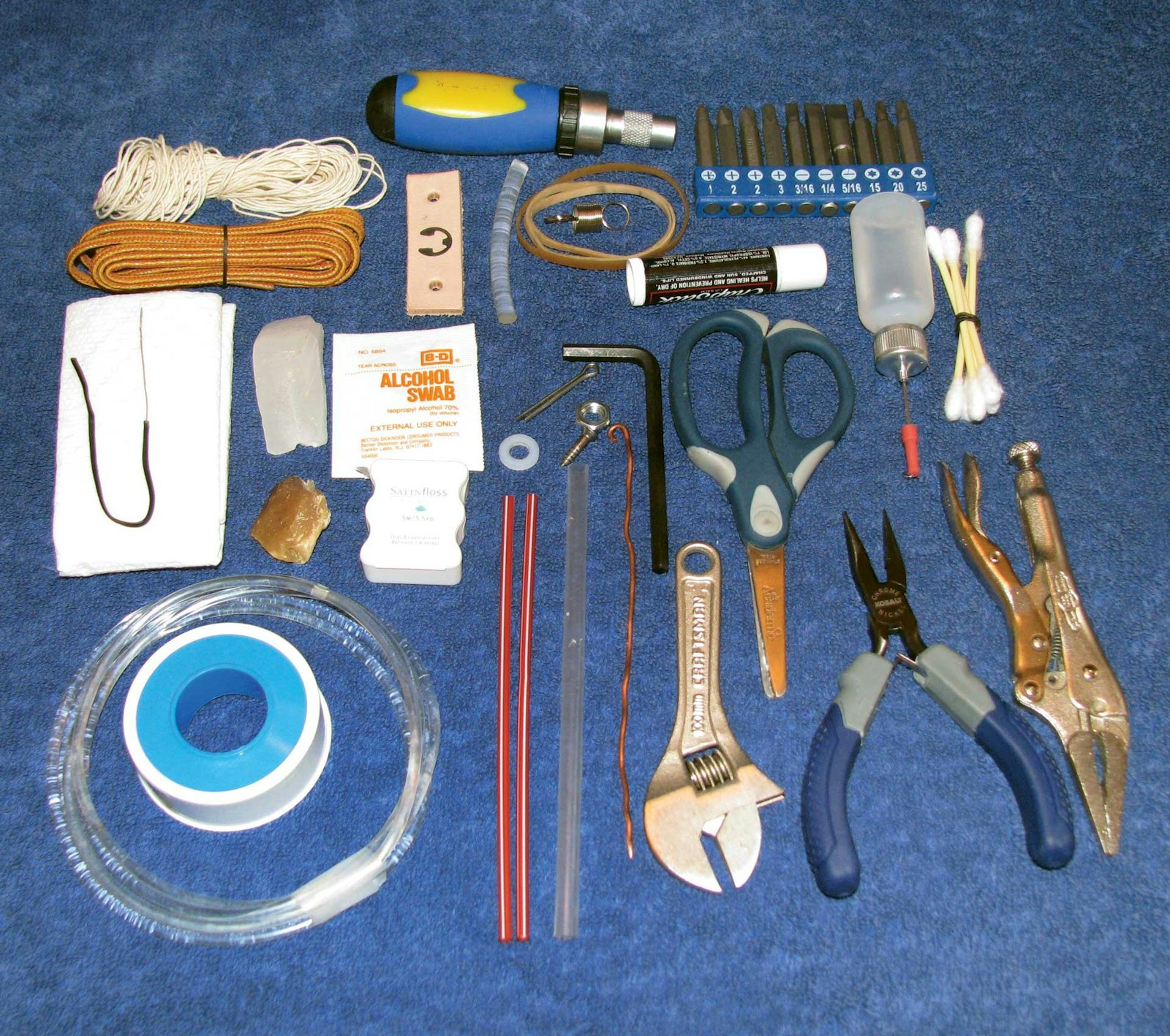While spinning away from home, occasionally I have needed to tighten, temporarily repair, or replace parts on my spinning wheel. I developed a kit to take with me that fits into a heavy quart-sized plastic bag and contains all the things I need for fixing almost any issue with my wheel.
If you’d like to put together a similar kit for your wheel, first take a good look at all of the solid parts on the wheel. Are the parts held together with any retaining clips, pins, connectors, screws, or nuts and bolts? These things can easily loosen and be lost in travel. As part of my kit, I have at least one of each type of these items in a small bag (Figure 1).
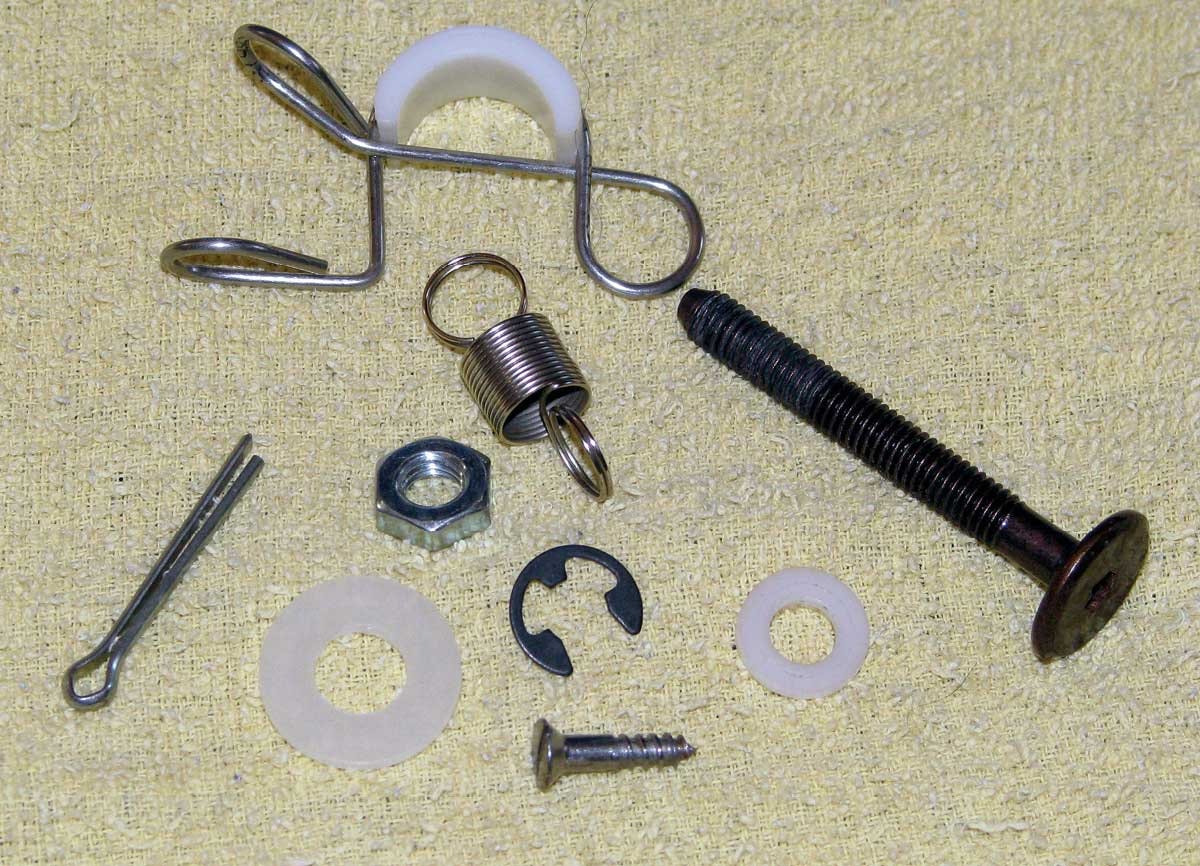
Figure 1. Spare hardware for your spinning wheel: O-ring, screw, nut, spring, pin, and thread guide.
Do any of the parts require a tool for adjusting? Tools may include small screwdrivers with both flat-blade and Phillips tips, a small adjustable Crescent wrench, hex keys (often called Allen wrenches), and a small pair of needle-nose pliers (Figure 2). I have also included a small pair of needle-nose vise grips in my kit as a third hand to hold onto things as I repair or replace them or to bend and straighten things. I don’t keep knives or any tools that contain a knife in this kit, as I travel by air occasionally.
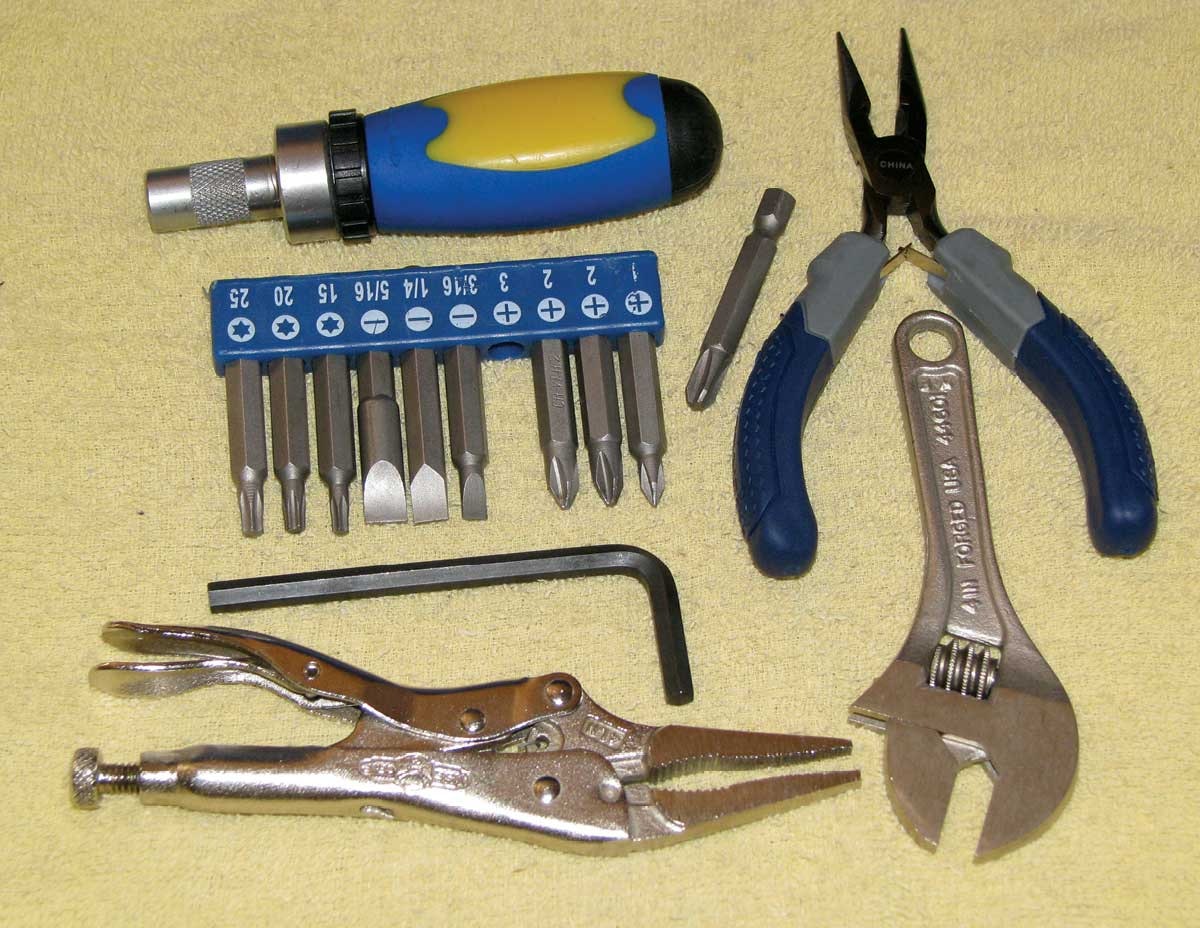
Figure 2. Tools needed to adjust the spare parts: wrench, needle-nose pliers, hex key, screw drivers and screw-driver heads, needle-nose vise grips.
Now take a look at the small, soft parts of the wheel. Are there any leather or silicone bits? Make sure that there is one of each of these small bits in the kit (Figure 3).
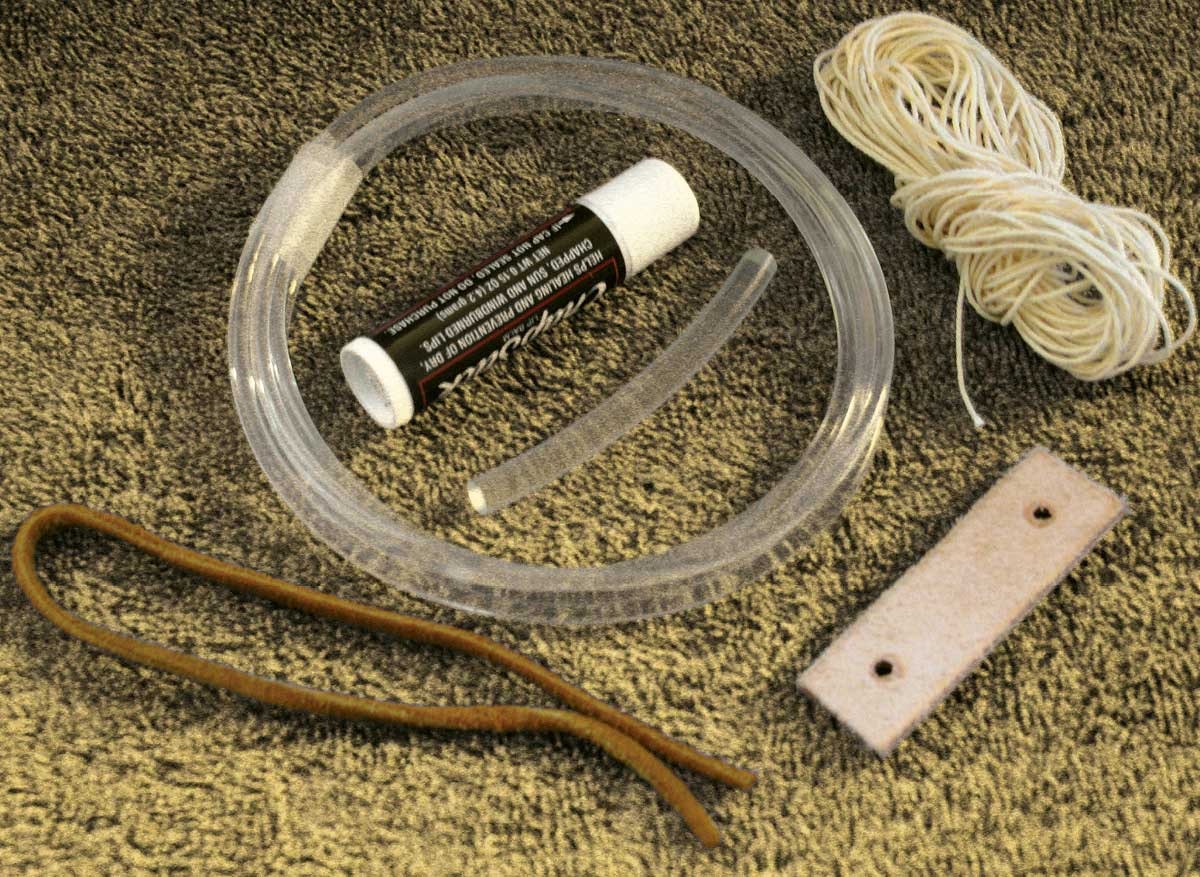
Figure 3. Spare soft parts for your spinning wheel: leather bits, leather shoelace, extra drive band, cotton twine, and unscented lip balm to keep leather parts pliable.
If the wheel has any leather pieces, include a bit of petroleum jelly to maintain the pliability of the leather and help it retain moisture. A small tube of unflavored, uncolored lip balm works well for this purpose. I also carry long leather shoelaces for repairs between the treadle and drive rod. I carry an extra drive band for my wheel and about 10 yards of cotton seine twine for both my tensioning device and to use as an emergency drive band if needed. My wheel has a spring in the tensioning system, so I have a replacement spring in my kit. I have several sizes of rubber bands that work in a pinch as tensioning devices or to quiet rattling wooden drive rods or loose bobbins on older flyers (Figure 4). Keep in mind that rubber bands break down when exposed to oil, so this is not a permanent fix. It is also useful to include a small pair of airplane-safe scissors, needle, and thread if you have a string drive band and want a smooth join (rather than a knot).
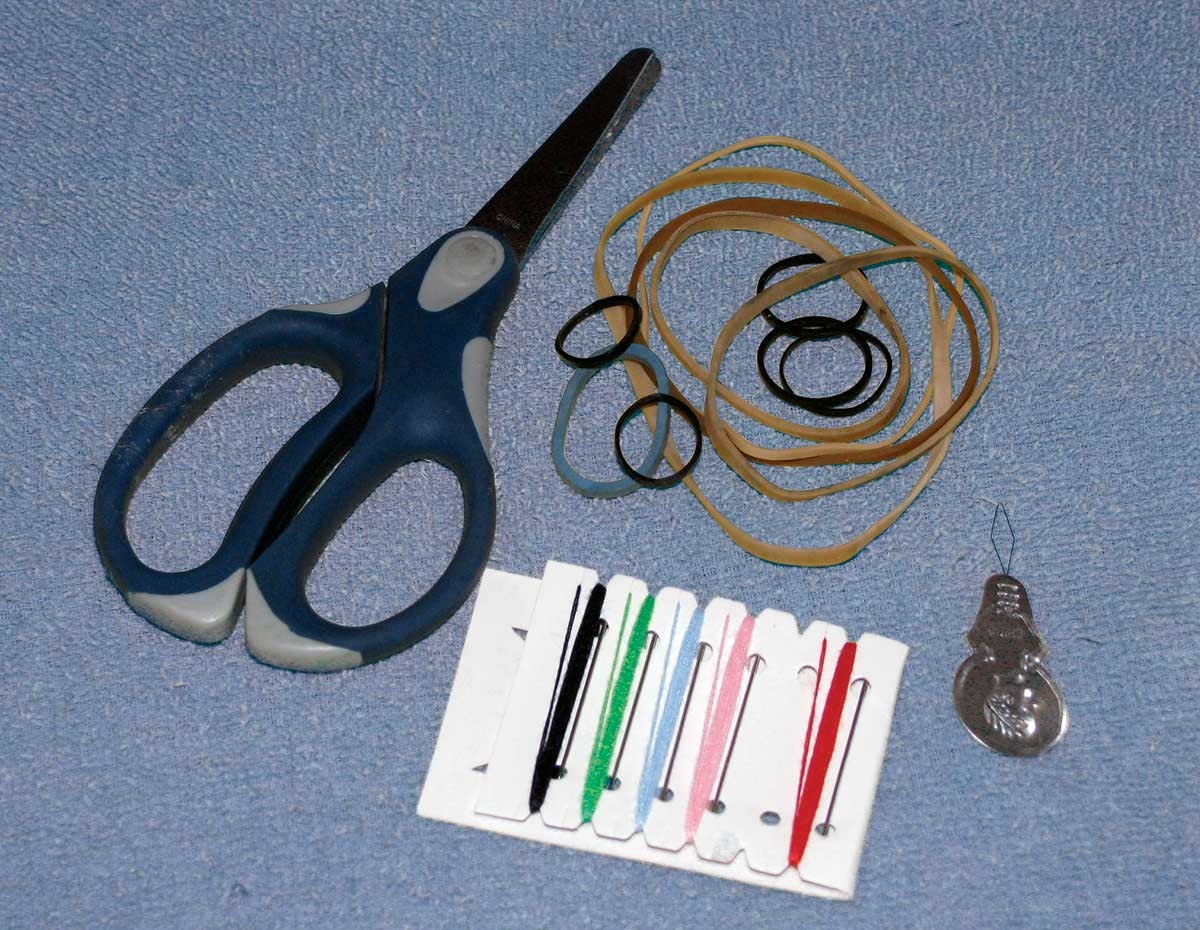
Figure 4. Round-tip scissors, rubber bands, thread, and threader.
In addition to an oil bottle, include a plastic stirring stick (one that is a tiny straw). I have found that there are places the applicator tip on my oil bottle cannot easily reach. Slipping the stirring stick over the tip of the oil bottle extends the length and allows me to apply oil into hard-to-reach places. Store the used stick in a separate plastic bag for reuse.
Other items for your kit are cotton-tipped swabs, paper towels, a few individually packaged alcohol wipes, and a small container of unwaxed dental floss (Figure 5). Use the swabs, paper towels, and alcohol wipes for cleaning up oil. Use the dental floss to remove fiber and odd bits of debris that accumulate on metal pivots on the treadles and the wheel. Dental floss comes in handy as an emergency tensioning twine, too.
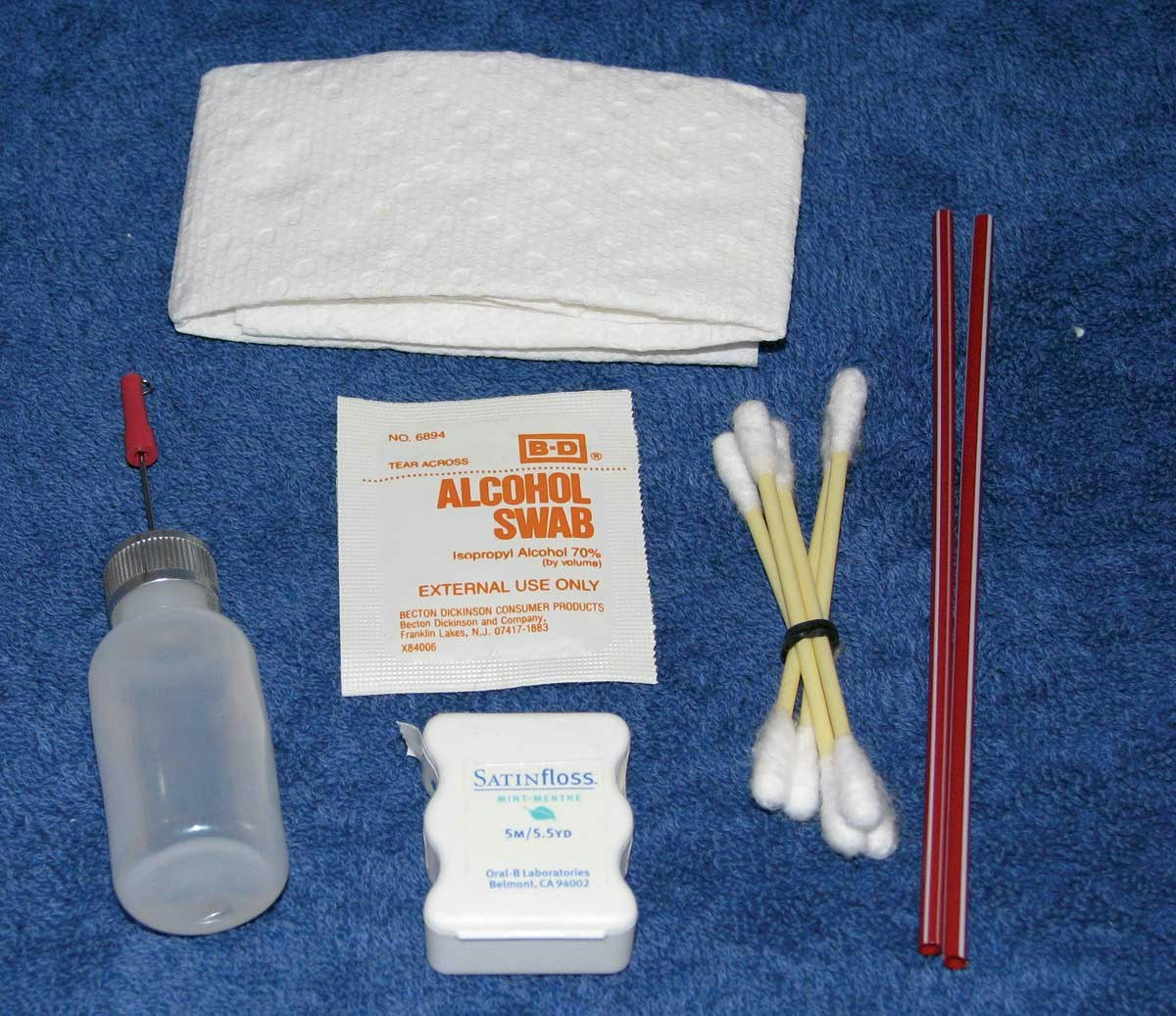
Figure 5. Paper towel, oil bottle, dental floss, alcohol wipe, cotton swabs, and plastic stirring sticks.
A few of the other bits that I have in my kit are plumber’s silicone pipe tape, a small lump of beeswax and another of paraffin, an 8-inch-long piece of 16-gauge copper wire, and a long twist tie with half of its cover removed (Figure 6). The plumber’s tape is a good temporary substitute for missing bushings, grommets, and washers. The waxes quiet squeaks, add friction when rubbed on drive bands or tensioning devices, and can smooth a knot in twine. Blending a curve in one end of the 16-gauge copper wire creates an orifice hook and sharpening the other end to a point with sandpaper allows for its use in cleaning out bobbins and orifices. I slip the pointed end of the wire into an 8-inch-long plastic straw to protect the point. The twist tie can thread the hole in the tensioning knob where twine is tied, clean hard-to-reach areas on the wheel and in the bobbin, pull fiber through the hole in a diz, and serve as a temporary retaining clip or pin on the wheel.
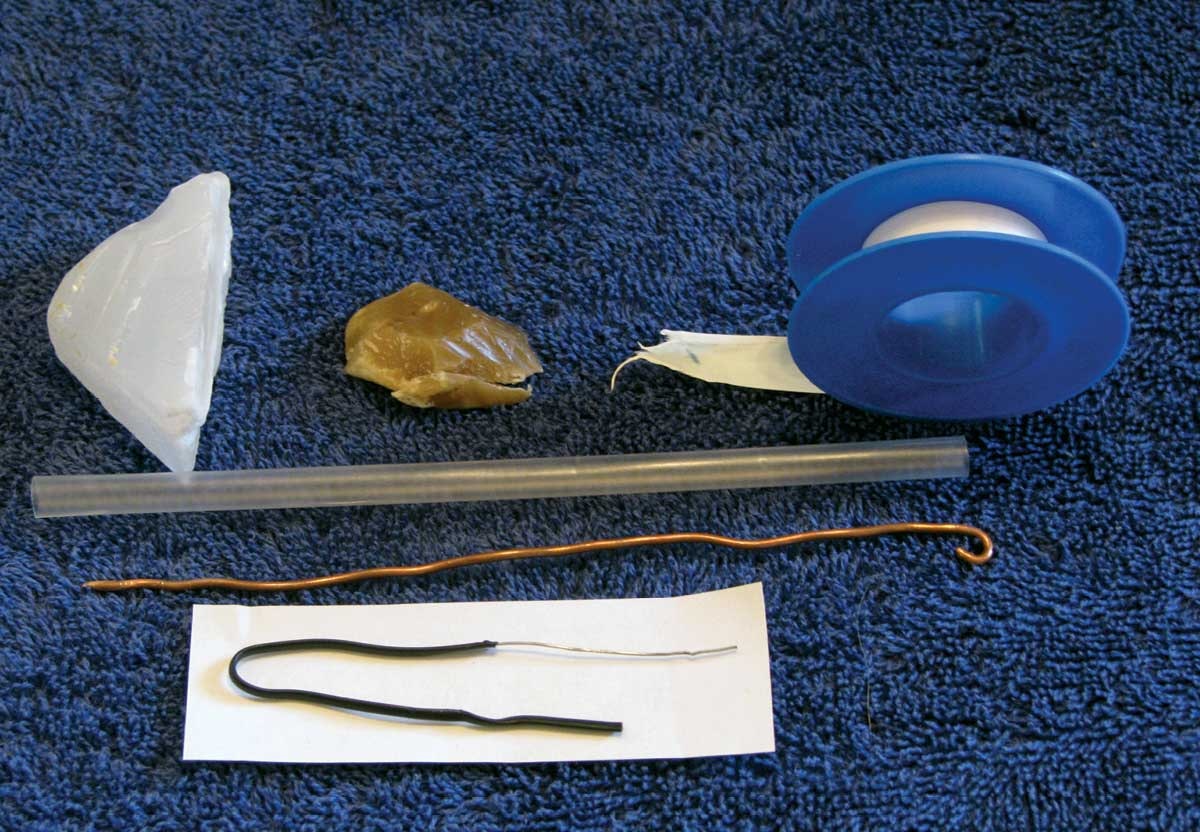
Figure 6. Plumber’s silicone pipe tape, a small lump of beeswax and another of paraffin, an 8-inch-long piece of 16-gauge copper wire stored in a plastic straw, and a long twist tie with half of its cover removed.
I recommend that any temporary fixes done while traveling be corrected or fixed properly with the parts specified by the wheel’s manufacturer as soon as possible. I have traveled with this kit on several airlines without incident, but regulations do change over time, so be prepared to replace confiscated items in your kit.
Lonna Alexander-Steele refurbishes modern and antique spinning wheels at her studio in McCall, Idaho. She has a passion for all things fiber and teaches spinning, weaving, and dyeing throughout the western United States.
This article was published in the Fall 2012 issue of Spin Off.

